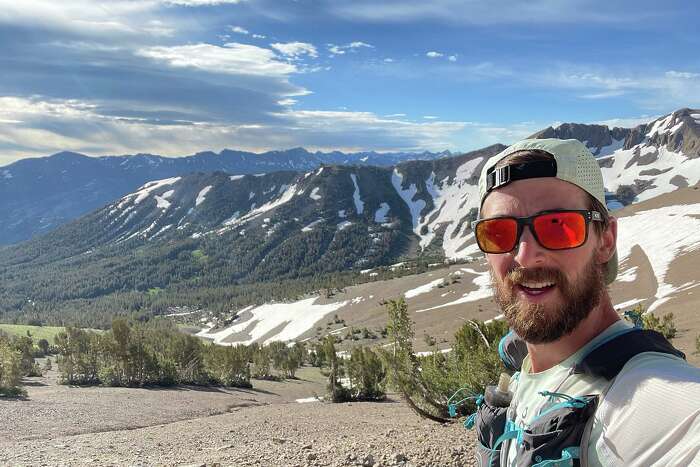A new nature preserve opened Thursday in Santa Clara County, offering hikers miles of new trails and sweeping views of the rolling hills encircling the South Bay.
Máyyan ‘Ooyákma Coyote Ridge Open Space Preserve, 15 miles south of downtown San Jose along Highway 101, boasts 1,859 acres of grassy slopes where the Diablo and Santa Cruz mountain ranges tail into one another. Hikers have the run of 5 miles of trails laid out in a large loop that culminates in a long traverse of a ridgeline overlooking the property.
Those footpaths also provide a 3-mile linkage to the Bay Area Ridge Trail, a massive project envisioned as a 550-mile trekking circuit linking open spaces to city streets across the nine-county region. About 400 miles of the trail are complete.
From 1959 until 2004, the site of Máyyan ‘Ooyákma (pronounced My-yahn Oiy-yahk-mah) served as a buffer zone for a nearby rocket and missile testing facility. It was purchased by the Santa Clara Valley Open Space Authority in 2015 and takes its name from a translation of “Coyote Ridge” in the native language of the Muwekma Ohlone Tribe indigenous to the region.

Most of Máyyan ‘Ooyákma Coyote Ridge Open Space Preserve in Santa Clara County is encompassed in a so-called habitat protection area. Before entering, visitors need to agree to a list of basic terms and conditions like staying on trail and not picking plants or flowers.
Courtesy Santa Clara Valley Open Space AuthorityThe 2.5-mile Bay Checkerspot Trail, so named for an endemic butterfly found on the property, is a favorite of most early preserve visitors, said Abel Castillo, open space technician with the authority who helped build the trail.
“It’s the most gorgeous part of Máyyan ‘Ooyákma, I think,” he said. “Once you reach the top, there’s a scenic overlook where you can see the whole valley.”
Wildlife and plant lovers will find special accommodations for rare and endangered species at the site, including the Bay checkerspot butterfly, tule elk, golden eagle, tiger salamander, California red-legged frog and Metcalf Canyon jewelflower, which live in the preserve’s rare serpentine grasslands.

Tule elk are among the rare and endangered species found on the Máyyan ‘Ooyákma Coyote Ridge Open Space Preserve in Santa Clara County.
Courtesy Santa Clara Valley Open Space AuthorityMost of the preserve is encompassed in a so-called habitat protection area, which requires visitors to abide by special rules codified in what the authority calls its Butterfly Pass. Before entering, visitors need to agree to a list of basic terms and conditions like staying on trail and not picking plants or flowers.
During peak wildflower season in spring, the habitat area is accessible only via docent-led tours. Shoe cleaning is required before entering that area. Also, the preserve’s hours of operation during winter and spring narrow in deference to the butterflies.

The 2.5-mile Bay Checkerspot Trail on the Máyyan ‘Ooyákma Coyote Ridge Open Space Preserve is so named for the endemic butterfly found on the property.
Courtesy Santa Clara Valley Open Space Authority“They need sunlight to spread their wings and fly, so we want to give them the best chance for survival,” said Charlotte Graham, a spokesperson for the authority.
There are picnic tables but no barbecues; dogs and fires aren’t allowed. Notably, Máyyan ‘Ooyákma has no trash cans.
“We don’t want to attract scavengers, so anything you bring, you have to take back with you,” Castillo said. “We want people to be aware of how fragile this ecosystem is.”
Reach Gregory T








